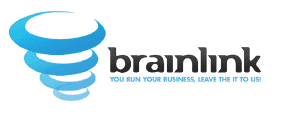NYC’s biggest infrastructure bet is official: the Metropolitan Transportation Authority’s $7 billion Penn Station Transformation Project, targeted to kick off by the end of 2027. Nested within the 2025–2029 MTA Capital Plan, this program is expected to support more than 70,000 jobs across New York State and catalyze roughly $106 billion in regional economic activity. For contractors, subcontractors, suppliers, and consultants, it signals years of steady, high-visibility work in the heart of Midtown.
What the Penn Station project includes
Penn Station is North America’s busiest rail complex, serving over half a million passengers daily. The plan spans well beyond cosmetic upgrades. Expect a deep modernization of tracks and platforms, vertical transportation, retail and concourses, adjoining subway connections, public plazas, accessibility enhancements, and sustainability improvements. That means multi-discipline opportunities: civil, structural, rail systems, MEP, low voltage and IT, HVAC and controls, wayfinding and digital signage, and more.
Why now matters
New York’s construction pipeline is strengthening. Recent market data points to higher nonresidential starts and a rebound in filings, with Q2 2025 new building filings up significantly year over year. Against that backdrop, Penn Station becomes both a jobs engine and a blueprint for the city’s broader infrastructure wave, alongside projects like the Gateway Tunnel and the Second Avenue Subway extension.
Who benefits
This program’s impact will spread across the ecosystem:
– General contractors and specialty subs: electrical, mechanical, steel, drywall, finishes, and rail-adjacent trades.
– Consultants and technology partners: systems integration, real-time information displays, access control, smart HVAC, and LEED components.
– Suppliers and logistics providers: materials sourcing and delivery chains across the region.
– Union labor and specialty trades: sustained demand for skilled, certified labor in safety-critical scopes.
Why it matters for firms running Sage 300 CRE
For privately held, mid-sized firms (roughly 30–200 employees), the difference between riding the wave and getting swamped is operational discipline. Sage 300 CRE can be more than an accounting system; it can be your command center.
1) Pipeline potential
Multi-year public work creates visibility. Use job cost, WIP, and forecasting to plan staffing, negotiate subcontracts with confidence, and stabilize cash flow.
2) Compliance and reporting pressure
Public projects demand certified payroll, MWBE participation tracking, lien waivers, and audit-ready documentation. Leverage built-in reporting, dashboards, and document control to stay bid-eligible and inspection-ready.
3) Collaboration and coordination
Prequalification, submittals, RFIs, insurance certs, daily logs, and closeout need to move digitally. Integrate Sage 300 CRE with your project management tools and standardize data handoffs to eliminate rework and delays.
4) Technology and cybersecurity
Agencies increasingly require strong IT controls. Harden endpoint security, enforce MFA, tighten user permissions, encrypt backups, and document incident response. System reliability and cyber hygiene now influence contract eligibility.
A practical 90-day action plan
– Validate job cost structure: confirm cost codes, cost types, and budget templates match upcoming transit and rail scopes.
– Standardize compliance packs: certified payroll reports, MWBE tracking, safety logs, and closeout checklists.
– Automate document flow: map submittals, RFIs, and change orders between field tools and Sage 300 CRE to reduce manual entry.
– Lock down security: MFA, least-privilege access, vendor patch cadence, immutable backups, and audit trails.
– Sharpen forecasting: implement rolling cash flow and labor projections tied to WIP and committed cost.
The bigger picture
Penn Station is a signal, not an outlier. With major rail and transit programs on deck, New York is entering an infrastructure upcycle. Expect more competition, tighter labor and materials markets, and higher expectations for digital execution. Firms that treat Sage 300 CRE as an operational backbone will be positioned to scale without sacrificing margin.
Frank’s take
Boom cycles do not automatically create healthy margins; disciplined execution does. Tight processes, reliable data, and resilient IT are what keep projects moving, compliant, and profitable. Shore up your workflows now so that when opportunities land, your teams are ready to deliver.
If you want to benchmark your readiness for public work, start with a quick review of your job cost structure, compliance reporting, and cybersecurity posture. From there, we can map improvements that unlock speed, accuracy, and control in Sage 300 CRE.
Reference:
MTA Capital Plan and Penn Station project news: https://cicbca.org/news/











